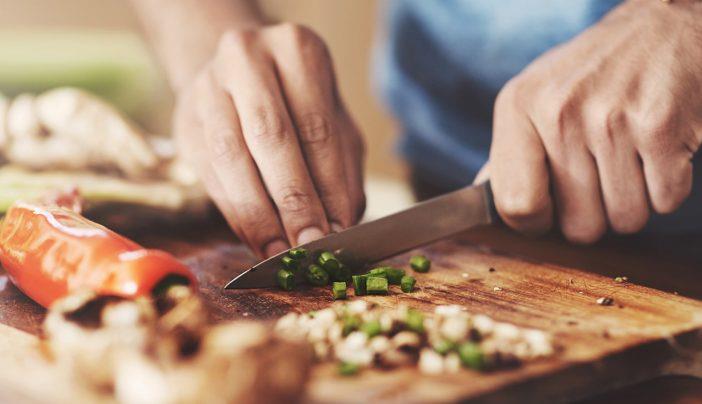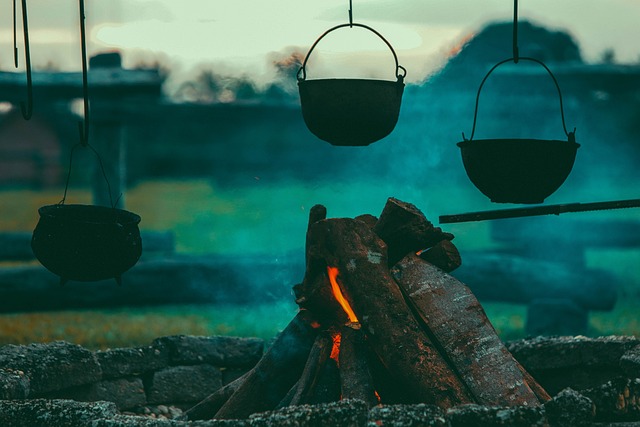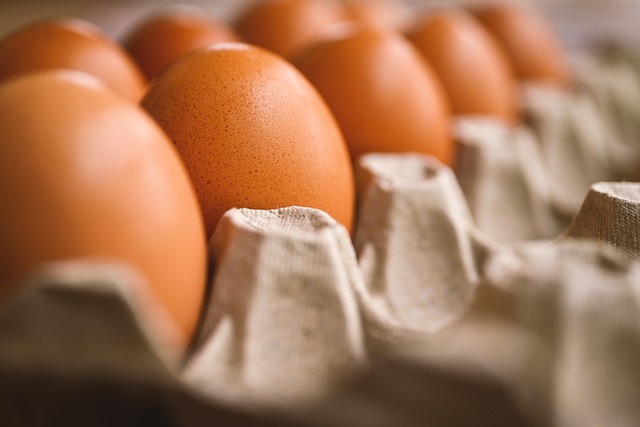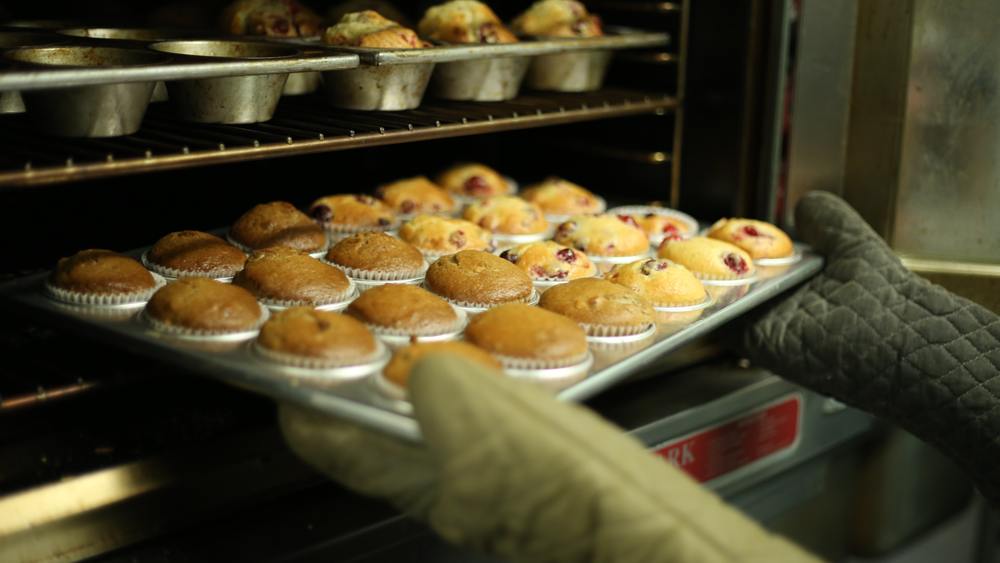
Embark on a journey towards culinary mastery as we unravel six essential techniques that will elevate your cooking prowess.
From honing knife skills to perfecting sautéing, roasting, grilling, braising, and baking, this article guides you through each step with precision and artistry.
Designed for the safety-conscious audience, our professional approach ensures a seamless learning experience.
Prepare to conquer the culinary world with confidence as you embrace these indispensable techniques.
Knife Skills
Mastering knife skills is a pivotal step towards culinary mastery. In the world of cooking, the precision and artistry of knife cuts can elevate a dish from ordinary to extraordinary. Understanding the basic knife cuts is essential for every aspiring chef. From the classic julienne to the delicate chiffonade, each cut requires skill and finesse.
However, it is important to prioritize knife safety while honing these techniques. Always keep your knives sharp to prevent slips and accidents. Use a cutting board that offers stability and invest in a quality knife set to ensure a secure grip.
Sautéing
Sautéing is a culinary technique that requires precise heat control and the right choice of oils. Mastering heat control is crucial in achieving the perfect balance between browning and cooking the ingredients.

Additionally, selecting the appropriate oils, such as those with high smoke points, ensures that the flavors are enhanced without overpowering the dish.
Perfecting Heat Control
One crucial aspect of achieving culinary mastery lies in the mastery of heat control when sautéing. Understanding flavor profiles and managing cooking time are essential elements in perfecting this technique.
Sautéing involves cooking food quickly in a hot pan with a small amount of oil or butter. To achieve the desired results, it is important to control the heat precisely. Start by preheating the pan over medium heat and adding the oil or butter. The temperature should be hot enough to create a sizzle when the food is added, but not so hot that it burns. Adjust the heat as necessary throughout the cooking process to maintain a steady and even heat.
Choosing the Right Oils
When it comes to sautéing, the choice of oils plays a crucial role in achieving the desired flavors and textures of your culinary creations. Different types of oils are suitable for different cooking techniques, and understanding their properties and health benefits is essential for a safe and delectable cooking experience.
Here are four key considerations when selecting oils for sautéing:
- Smoke point: Opt for oils with high smoke points, such as avocado oil or refined olive oil, to prevent them from breaking down at high temperatures and releasing harmful compounds.
- Flavor profile: Consider the flavor of the oil and how it complements your dish. For a neutral taste, vegetable or canola oil are good choices, while coconut or sesame oil can add a distinct flavor.
- Nutritional value: Choose oils that offer health benefits, such as extra virgin olive oil with its heart-healthy monounsaturated fats, or coconut oil with its potential antimicrobial properties.
- Stability: Some oils, like grapeseed or sunflower oil, are more stable and have longer shelf lives, making them suitable for sautéing.
Roasting
Roasting is a fundamental cooking technique that allows culinary enthusiasts to achieve rich, caramelized flavors and juicy, tender textures in various ingredients. To ensure success when roasting, it is essential to pay attention to two key factors: proper seasoning and achieving the perfect caramelization.
First and foremost, proper seasoning is crucial when roasting. This involves generously seasoning the ingredients with salt and any desired spices or herbs. The seasoning not only enhances the flavor but also draws out moisture from the ingredients, resulting in a beautifully browned exterior.

Secondly, achieving the perfect caramelization is a skill that requires precision. This can be achieved by ensuring that the ingredients are evenly spaced on the roasting pan, allowing enough space for hot air to circulate. Additionally, maintaining the right temperature throughout the roasting process is vital to achieving that desirable golden-brown crust.
Grilling
Continuing the culinary exploration, the next technique to conquer on the journey to becoming a culinary maestro is grilling, a method that offers a distinct smoky flavor and charred perfection to various ingredients. Grilling is not just about throwing food on a hot grill; it requires careful consideration and mastery of specific techniques. Here are four essential grilling techniques to elevate your culinary skills:
- Preparing Marinades: Enhance the flavor and tenderness of your grilled dishes by marinating them beforehand. A well-crafted marinade can infuse your ingredients with delicious flavors and help tenderize tougher cuts of meat.
- Direct Grilling: This technique involves cooking the food directly over high heat. It is perfect for smaller, thinner cuts of meat, as it allows for quick and even cooking, resulting in a caramelized exterior and juicy interior.
- Indirect Grilling: Utilize indirect heat to cook larger, thicker cuts of meat. By placing the food away from the direct heat source, you can achieve a slower and more controlled cooking process, ensuring a tender and evenly cooked result.
- Reverse Searing: This method involves searing the meat at the end of the cooking process. By starting with low heat and finishing with high heat, you can achieve a beautifully charred exterior while maintaining a perfectly cooked interior.
Braising
Moving on from the technique of grilling, the next culinary skill to conquer on the journey to becoming a culinary maestro is the art of braising.
Braising involves tenderizing and infusing flavors into ingredients through slow cooking in a liquid. This method allows for the gradual breakdown of tough meats and vegetables, resulting in tender and succulent dishes. The slow cooking process ensures that the flavors meld together beautifully, creating a depth of taste that is unparalleled.
Braising is a technique that requires patience and attention to detail, as the cooking temperature and time must be carefully monitored to achieve optimal results. It is important to ensure that the liquid used for braising is brought to a simmer and maintained at a consistent temperature throughout the cooking process.
Baking
After mastering the art of braising, the next technique to conquer on the culinary journey is baking. Baking is a fundamental skill that opens up a world of delicious possibilities. To help you on your baking adventure, here are four essential techniques to master:
- Precision in Measurements: Baking is a science that requires accurate measurements. Invest in a good set of measuring cups and spoons to ensure your ingredients are perfectly portioned.
- Temperature Control: Understanding your oven is crucial to successful baking. Preheating, monitoring temperature, and adjusting as needed will ensure even baking and prevent undercooked or burnt creations.
- Mixing Methods: Different recipes call for different mixing techniques. Whether it's creaming, folding, or whisking, understanding and mastering these methods will greatly enhance your baking skills.
- Art of Cake Decorating: Elevate your baked goods by learning cake decorating techniques. From simple frosting techniques to intricate designs, cake decorating adds a touch of artistry to your creations.
Frequently Asked Questions
What Are Some Common Mistakes to Avoid When It Comes to Knife Skills?
Common knife mistakes to avoid include using dull blades, incorrect grip and holding technique, improper cutting motions, not using a cutting board, and not maintaining knife cleanliness. Proper knife techniques ensure safety and precision in culinary endeavors.

How Can I Ensure That My Sautéed Dishes Don't End up Being Too Oily?
To ensure that sautéed dishes are not too oily, there are several tips to follow. Use high heat and a small amount of oil, pat dry ingredients before sautéing, and avoid overcrowding the pan. These techniques can help achieve a light and flavorful sauté.
What Are Some Tips for Achieving a Crispy and Flavorful Roast?
Achieving the perfect seared crust and enhancing flavors with seasonings are key techniques to achieving a crispy and flavorful roast. Follow these tips to ensure a delicious and safe culinary experience.
Are There Any Specific Grilling Techniques That Can Help Ensure Perfectly Cooked and Juicy Meats?
Grilling techniques play a crucial role in achieving perfectly cooked and juicy meats. By using precise methods such as direct and indirect grilling, marinating, and proper temperature control, one can ensure the desired results while prioritizing safety.
Can You Provide Any Advice on How to Tenderize Tough Cuts of Meat When Braising?
When braising tough cuts of meat, it is essential to employ proper braising techniques and meat tenderizing methods. These methods can help break down the tough fibers, resulting in tender and flavorful meat.
 Family Craft ProjectsHome ImprovementCooking and BakingReuse and RecycleDIY GiftsEco-Friendly ProjectsDIY Home SolutionsSeasonal ActivitiesFun and GamesLearn TogetherPrivacy PolicyTerms And Conditions
Family Craft ProjectsHome ImprovementCooking and BakingReuse and RecycleDIY GiftsEco-Friendly ProjectsDIY Home SolutionsSeasonal ActivitiesFun and GamesLearn TogetherPrivacy PolicyTerms And Conditions

 Family Craft ProjectsHome ImprovementCooking and BakingReuse and RecycleDIY GiftsEco-Friendly ProjectsDIY Home SolutionsSeasonal ActivitiesFun and GamesLearn TogetherPrivacy PolicyTerms And Conditions
Family Craft ProjectsHome ImprovementCooking and BakingReuse and RecycleDIY GiftsEco-Friendly ProjectsDIY Home SolutionsSeasonal ActivitiesFun and GamesLearn TogetherPrivacy PolicyTerms And Conditions
